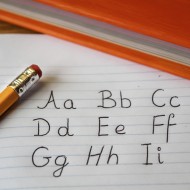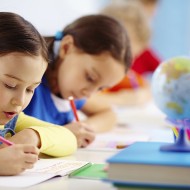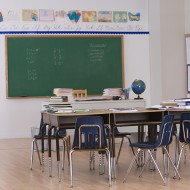Education Level: Primary Schools

Primary school generally refers to a school that provides education from kindergarten through to when secondary school begins. Primary education focuses on the basic socialization skills and academic learning. It offers a broad knowledge of mathematics, English proficiency (including spelling, vocabulary, grammar) and other fundamental subjects.
Articles in: Primary SchoolsPrimary School Curriculum

In the United States, primary school refers to the first eight or nine years of formal, compulsory education for children. Primary school may also be referred to as elementary school. The first year of formal education is called kindergarten; most of the time, it begins around the age of five. Following kindergarten, students enter the first grade, followed by the second, third, fourth, and fifth. In general, fifth grade is considered the last year of primary education. Students graduating from fifth or sixth grade, who are usually between 10 and 12 years old, enter middle school. Most elementary...

Funding for Primary Schools

In the United States, the Constitution deems that funding for public schools, including primary and elementary schools, is primarily the responsibility of the states. Individual state constitutions must make provisions for public schools that provide effective programs for students under the age of eighteen. Of course, the quality of the education often depends on the funding allocated to this cause. Finance systems vary a great deal from state-to-state. Most have evolved over the years according to changes in political climate. In addition, funding is also provided by federal and municipal...

Standardized Testing for Primary Schools

Students in primary and elementary schools in the United States take more standardized tests than students in other industrialized nations, writing at least one standardized test each year between Grade Three and Grade Eight. Students in the U.S. may also spend up to 50 hours writing standardized tests each year. In spite of this, American students tend to score lower on international tests compared to their global counterparts. In some cases, results from standardized tests may be used to hold students back from progressing to a higher grade. Results from tests may also directly affect how much a...

Primary School Teacher Certification

Primary and elementary school teachers work to educate younger students, often between the ages of five and twelve. They teach basic, core subjects including math, reading, writing, science, physical education, music, art, and social studies. They may work in public schools or private schools and in general, they work when children are in school, approximately from 8:00 a.m. to 3:00 p.m. Primary and elementary school teachers may also work during the evenings or on weekends to prepare lessons and grade student homework. In most cases, they do not work when students are off for two months in the...

Types of Primary Schools

There are approximately 49 million children and adolescents across the United States enrolled in public schools, including primary, elementary, middle, and secondary schools. Six million additional students attend private schools for kindergarten through to Grade Twelve. Knowing which school to send your child to requires knowing the different types of schools currently out there. The following article gives a brief overview of the various types of public and private elementary schools. Types of Public Elementary Schools Public schools are funded by the local and state governments and sometimes get...

